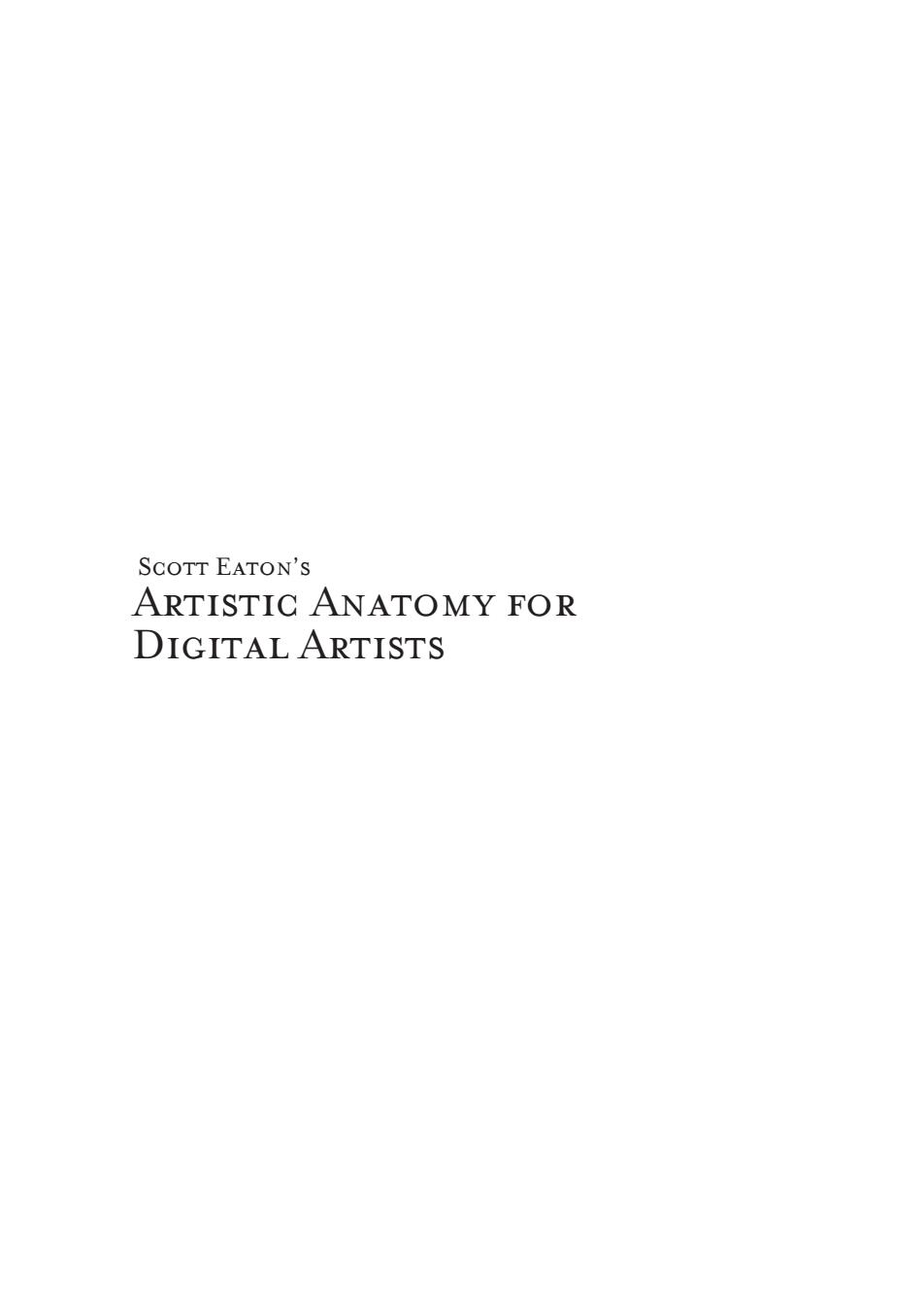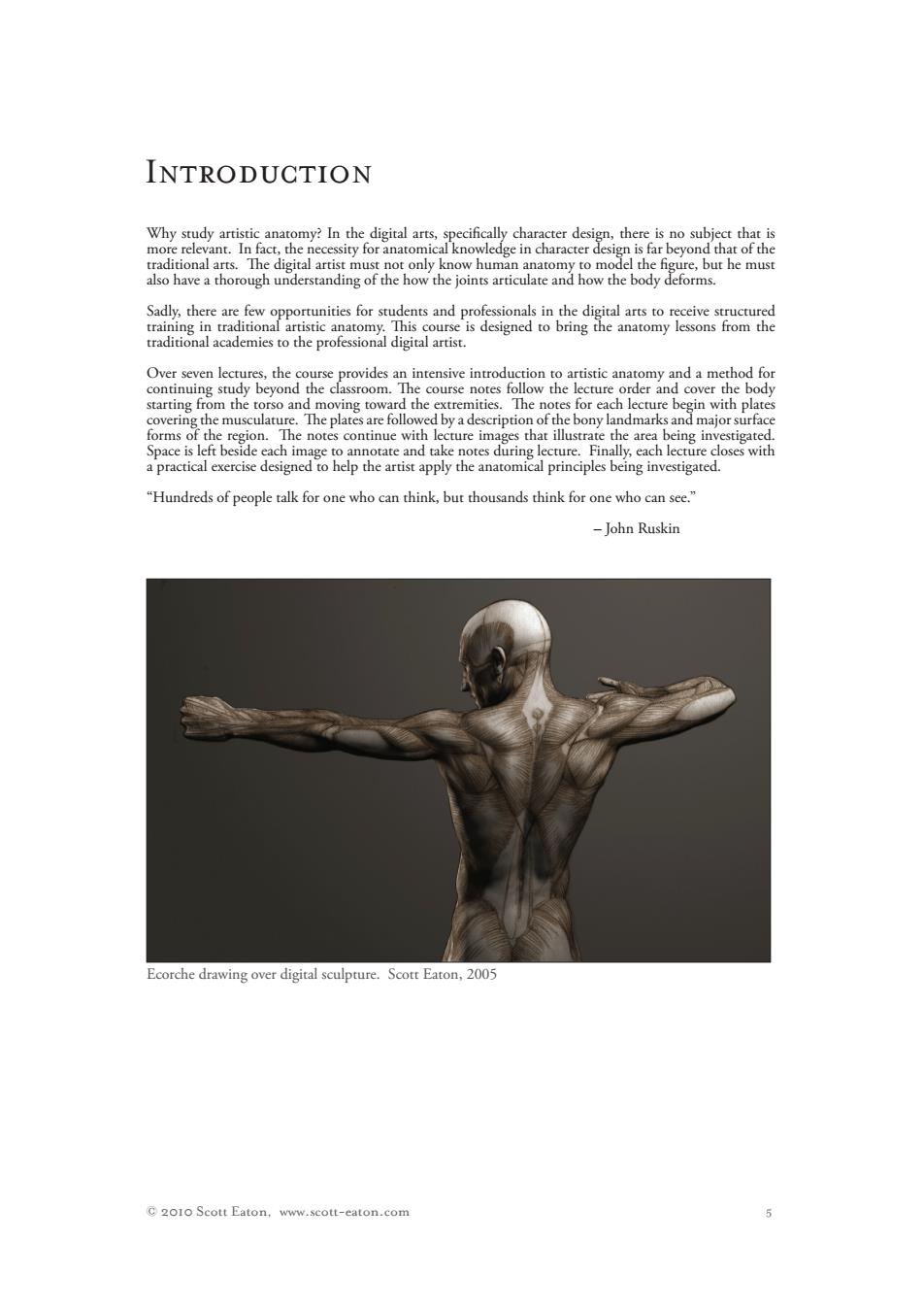
SCOTT EATON'S ARTISTIC ANATOMY FOR DIGITAL ARTISTS
Artistic Anatomy for Digital Artists Scott Eaton’s

C2010 Scott Eaton.www.scott-eaton.com
2 © 2010 Scott Eaton, www.scott-eaton.com

TABLE OF CONTENTS INTRODUCTION LECTURE 1:PROPORTION AND SKELETON 15150 LECTURE 2:THE TORSO Forms ant Landmarks 5517689 P Eriv 15580 LECTURE 4:LEGS Pracical Esere 15701 LECTURE 5:HANDS AND FEET Hands 55456 LECTURE 6:HEAD AND NECK 9 LECTURE 7:GENDER,WEIGHT AND AGE 盈 N DIX A APPENDIX B earning Resources 72 2010 Scott Eaton,www.scott-eaton.com
© 2010 Scott Eaton, www.scott-eaton.com 3 Table of Contents Introduction Lecture 1: Proportion and Skeleton Mass Conception 13 Skeleton 15 Bony Landmarks 20 Lecture 2: the Torso Forms 25 Important Landmarks 25 Examples 27 Examples 28 Practical Exercises 29 Lecture 3: Arms Important Landmarks 35 Forms 35 Examples 38 Practical Exercise 40 Lecture 4: Legs Forms 45 Examples 47 Practical Exercise 50 Practical Exercise 51 Lecture 5: Hands and Feet Hands 53 Examples 54 Feet 55 Examples 56 Lecture 6: Head and Neck Forms 60 Examples 61 Lecture 7: Gender, Weight and Age Gender 63 Weight 65 Age 66 Appendix A Ecorché 67 Appendix B Learning Resources 72

C 2010 Scott Eaton.www.scott-eaton.com
4 © 2010 Scott Eaton, www.scott-eaton.com

INTRODUCTION d b p ajor that illus mo Hundreds of people talk for one who can think,but thousands think for one who can s. -John Ruskin Ecorche drawing over digital sculpture.Scot Eaton,2005 2010 Scott Eaton,www.scout-eaton.com
© 2010 Scott Eaton, www.scott-eaton.com 5 Introduction Why study artistic anatomy? In the digital arts, specifically character design, there is no subject that is more relevant. In fact, the necessity for anatomical knowledge in character design is far beyond that of the traditional arts. The digital artist must not only know human anatomy to model the figure, but he must also have a thorough understanding of the how the joints articulate and how the body deforms. Sadly, there are few opportunities for students and professionals in the digital arts to receive structured training in traditional artistic anatomy. This course is designed to bring the anatomy lessons from the traditional academies to the professional digital artist. Over seven lectures, the course provides an intensive introduction to artistic anatomy and a method for continuing study beyond the classroom. The course notes follow the lecture order and cover the body starting from the torso and moving toward the extremities. The notes for each lecture begin with plates covering the musculature. The plates are followed by a description of the bony landmarks and major surface forms of the region. The notes continue with lecture images that illustrate the area being investigated. Space is left beside each image to annotate and take notes during lecture. Finally, each lecture closes with a practical exercise designed to help the artist apply the anatomical principles being investigated. “Hundreds of people talk for one who can think, but thousands think for one who can see.” – John Ruskin Ecorche drawing over digital sculpture. Scott Eaton, 2005